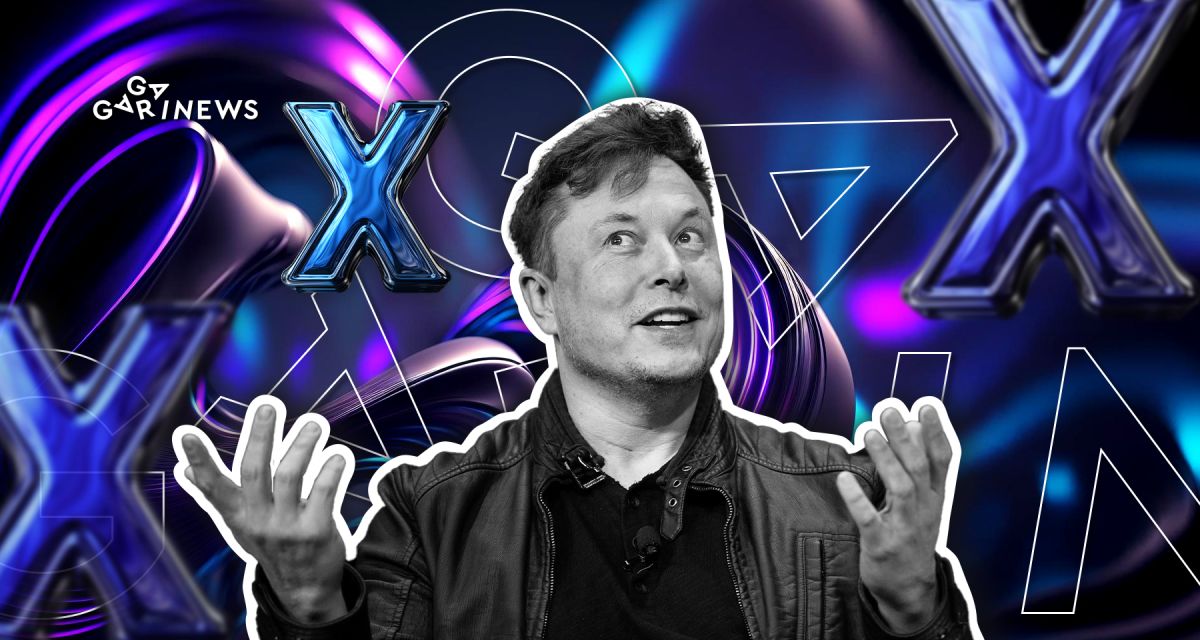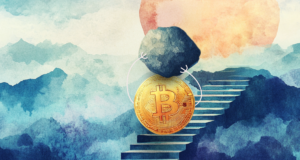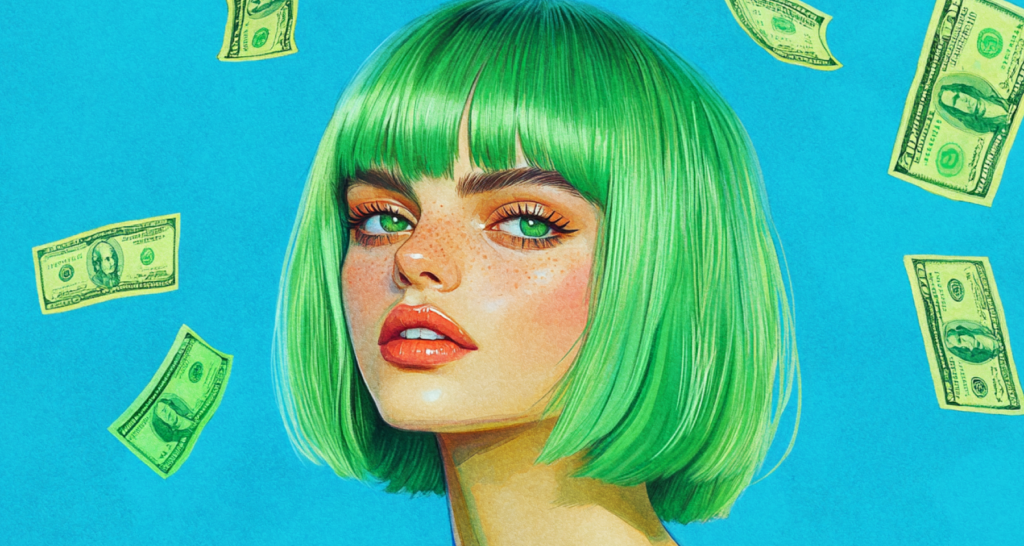X-ing Fingers: Musk Set to Revolutionize the Social Media World

The newly christened X, previously known as Twitter, has seen an impressive surge in users. This milestone marks the first triumph of a radical rebranding strategy where the platform’s owner, Elon Musk, is converting the tweeting bird into an ambitious all-in-one app.
On this page
“? monthly users reach new high in 2023,” Xed the billionaire.
Subscriber Growth Rate Source: X
Twitter: When a Breeze of Change Turns into a Storm
Musk, one of the world's wealthiest individuals, has gained a reputation as an innovator, pioneering rockets and electric cars with SpaceX and Tesla. Additionally, he played a pivotal role in the establishment of PayPal and OpenAI, including its ChatGPT. Musk often treated his Twitter followers to intriguing conspiracy theories or casual mentions of Dogecoin, causing its price to surge. Eventually, the entrepreneur purchased Twitter Inc. for $44 billion in October 2022. Since then, the company has experienced unceasing shifts, drawing attention from both its employees and market analysts.
Twitter has subsequently weathered multiple waves of mass employee exits. One particular departure wave was sparked by Musk's ultimatum in November, of which The Washington Post managed to get a copy.
“Going forward, to build a breakthrough Twitter 2.0 and succeed in an increasingly competitive world, we will need to be extremely hardcore… This will mean working long hours at high intensity. Only exceptional performance will constitute a passing grade,” Musk wrote in a late-night email to his employees. His staff was given two options: accept these conditions or exit the company. The new owner of the social network gave them 24 hours to decide. The following day, people started leaving the corporate Slack channel, marking their departure with a farewell emoji.
Musk's email also declared that Twitter would soon adopt a more engineering-driven approach. The recent rebranding to ‘X' can be viewed as the start of a major overhaul, a transformation Musk had been signaling for a while. The plot is thickening, especially considering the entrepreneur has mentioned multiple times in recent months that the company is teetering on the edge of bankruptcy. A precipitous drop in advertising revenue is the primary culprit, and the situation won't be remedied simply by swapping out the bird logo for an ‘X'.
Analytics firm Pathmatics reports that following the change of ownership, Twitter Inc. saw a decline of about 60% in its advertising budgets. Over 600 of the largest 1000 advertisers, including powerhouses like Coca-Cola, Jeep, Unilever, and Merck, have suspended their collaboration with the platform. Brands have expressed unease with Musk's insistence on relaxing content moderation policies in the name of upholding free speech. Advertisers are wary that the platform may drown in a flood of hate speech. This negative sentiment is further fanned by public activists, pushing for an end to partnerships with Musk.
It's worth noting that the U.S. is on the brink of a presidential race. It's clear that the influential reach of ‘X' is causing some apprehension in certain political circles. Control of the social network could certainly turn out to be a game changer in the Presidential elections.
The Journey from Twitter to X: Where Did It All Begin?
The Initial Twttr Logo Source: X
A revolutionary platform was launched by American entrepreneurs and programmers Jack Dorsey, Noah Glass, Biz Stone, and billionaire Evan Williams (the founder of popular blogging platform Medium) in 2006.
The concept of exchanging textual statuses is widely attributed to Jack Dorsey. He was also the author of the world's first tweet.
“just setting up my twttr,
he tweeted.
In its early stages, the platform was simply called twttr. Source: X
Within a month of its launch, the team recognized Twitter's potential as a tool for real-time event coverage. This realization was spurred by a multitude of users posting about an earthquake in California. By the fall, Twttr had rebranded itself as Twitter.
By the summer of 2007, just a year later, Twitter secured $20 million in funding. Around the same time, the hashtag icon made its debut, a suggestion brought forth by blogger Chris Messina.
By 2009, Twitter had grown sufficiently to be featured on the iconic Oprah Winfrey Show. During his appearance, Evan Williams demystified Twitter for Oprah's multi-million audience, harking back to a time when television was used to explain the concept of the internet. In that same year, the project's founders were recognized on the influential Time100 list. Google started indexing tweets in its real-time search. The project, under Dorsey's stewardship, began to evolve into a more commercial entity, as demonstrated by the introduction of promoted tweets.
By 2012, Twitter had gathered a user base of 140 million — an impressive 40% surge from the previous year. These users were collectively posting 340 million tweets each day. The introduction of the now-familiar bird logo, symbolizing Twitter for the following 11 years, occurred during this period.
Twitter's logo evolution Source: The New York Times Magazine
In 2013, Twitter set its sights on going public and accordingly filed documents with the U.S. Securities and Exchange Commission. The company's prospectus, put together in preparation for its Initial Public Offering (IPO), spanned over 800 pages. Goldman Sachs was appointed as Twitter's underwriter. After the initial round of trading, the company's value was estimated to be $31 billion.
Fast forward two years to 2015, when Twitter's developers introduced targeted advertising and a new feature to quote tweets. Coincidentally, this was the same time when Google started incorporating users' tweets into their mobile search results. Interestingly, not long after these developments, Omid Kordestani vacated his position as Google's Chief Business Officer to take on the role of Twitter's CEO, a position he held until 2020.
There are several pivotal moments worth mentioning in the evolution of what is currently known as X. The first significant change came in 2017 when the character limit for tweets was expanded from 140 to 280. Another significant event occurred in 2019 when data was revealed about thousands of fake accounts linked to Iranian and Russian governmental entities.
Fast forward to April 2022, Elon Musk and the leadership at Twitter agreed to sell the company. By fall, the acquisition of the social network was completed. Musk immediately dismissed the majority of the company's top managers and reinstated the account of former U.S. President Donald Trump.
Musk marked the occasion by posting, “The bird is freed.”
Elon Musk Gets His Way Source: Х
Twitter Steps Aside for X — The All-In-One App
By the following spring, the iconic blue bird logo had been removed from the Twitter website and was temporarily replaced with a Shiba Inu, signaling yet another nudge to the cryptocurrency market. That move predictably led to a rise in the value of Dogecoin. Musk showed his flair for influencing his audience's “canine” instincts.
The internet community was then rocked by the introduction of “X,” taking over the familiar brand.
The bird icon has flown off into the sunset Source: X
It’s an exceptionally rare thing – in life or in business – that you get a second chance to make another big impression. Twitter made one massive impression and changed the way we communicate. Now, X will go further, transforming the global town square,
said Linda Yaccarino, the newly appointed CEO of X.
Linda Announces Significant Changes Source: X
The entire platform's concept is set for a complete overhaul. In July, Musk managed to secure a license to operate payment systems in three states in the U.S. This suggests that he is laying the groundwork for the creation of a U.S. equivalent to the Chinese super-app, WeChat. Similar projects are also rapidly gaining traction in India, with PayTM, and in Indonesia with GoJek. The functionalities of these platforms extend beyond mere messaging. The ‘all-in-one' app concept that Musk is planning to bring to fruition could be utilized for various purposes including sending and receiving payments, consuming and listening to content, and arranging taxi rides, among other services.
The success of this venture remains uncertain at the moment. On one hand, Musk's abrupt decision to abandon a well-established brand is a bold and potentially ill-advised move.
By changing Twitter’s app name, Elon Musk will have single handedly wiped out over fifteen years of a brand name that has secured its place in our cultural lexicon. This is an extremely risky move because with ‘X,’ Musk is essentially starting over while its competition is afoot,
Mike Proulx, a research director at advisory firm Forrester, told The Independent.
Contrarily, other experts have different opinions. In the months following Musk's incorporation into the company, a myriad of reputational issues have arisen around Twitter. The opportunity to start afresh, while simultaneously leveraging a large, loyal user base, might prove to be a lucky stroke for Musk.
Debra Aho Williamson, the principal analyst at Insider Intelligence, points out that the entirety of China's payment infrastructure is indeed centered around the concept of super-apps. However, in the Western world, including countries such as Canada and the United States, people's financial habits are vastly different—they are used to using their credit cards. Would they trust social networks with handling their payments? Would they want to interact with their bank through X? That's uncertain. Despite Musk's experience with PayPal, it will be a challenge for him to create a new all-encompassing system based on X and, crucially, to convince consumers of its necessity.
X is this sort of unformed brand right now. Сan Musk make a brand that people want to and interact and engage with in all these different ways?
Williamson wonders.
In addition, it turns out that in the U.S., there are 900 (!) trademarks registered that employ the “X” symbol to some extent. Among the companies holding rights to the letter X are Mark Zuckerberg's Meta (with a TM featuring a blue-white “X”, registered for the areas of social networking, entertainment, gaming, and app development) and Microsoft (with trademarks featuring the “X” related to the Xbox console). Intellectual property lawyers argue that tech industry leaders won't miss an opportunity to dismantle Musk's project right from the get-go and will undoubtedly dispute the legality of the new brand in court.
Musk himself seems more than ready for a fight. It recently came to light that he had appropriated the Twitter handle @X, under which photographer Gene X. Hwang had been posting for over 16 years, without any due process. Neither Musk nor his company offered any compensation to the previous owner. According to media reports, the billionaire similarly seized control of the @e handle last fall.
Alls well that ends well,
the former owner of @X commented.
Elon Musk is up to his usual antics Source: X
And so, facing market resistance, navigating through manipulations, scandals, and lawsuits, the new “all-in-one app” X embarks on its journey.
Blaze your glory
Elon Musk blesses his brainchild.
X, bon voyage! Source: X, App Store
The content on The Coinomist is for informational purposes only and should not be interpreted as financial advice. While we strive to provide accurate and up-to-date information, we do not guarantee the accuracy, completeness, or reliability of any content. Neither we accept liability for any errors or omissions in the information provided or for any financial losses incurred as a result of relying on this information. Actions based on this content are at your own risk. Always do your own research and consult a professional. See our Terms, Privacy Policy, and Disclaimers for more details.



































